How to Get Followers in Domain_6 Without Following
As the lockdowns started all over the world, I found myself with a lot more spare time. While the pressure to learn new skills and make the most of the lockdown seemed a little unhealthy, I wanted to channel this new free time into something constructive.
Around the same time, a friend of mine was furloughed and went from working a 40 hour week to nothing. Although we had discussed working together on a store for months, the timing never seemed to work. But then, thanks to a worldwide pandemic, we suddenly had nothing but time.
Over the next few weeks, we transformed an old online store I had started months before (and quickly abandoned). We changed niche, purchased a new domain, imported new items, and optimized all our product descriptions for search.
With our store looking much better than ever, we wanted to establish ourselves within our niche community. Although we had written a blog that was starting to rank, we needed a quicker way to make an impact, so we started posting on Instagram.
Post Contents
- Building Our Instagram Account
- Research Your Niche and Community
- Find Hashtags to Help You Make an Impact
- Post Multiple Times a Day
- Post What Your Followers Want – Not Just Ads
- Engage with Your Community and Followers
- Fine Tune With Analytics
- Things We Should Have Done Sooner
- Make Our Posts Shoppable
- Set up Posting Schedules
- Creating a Link Directly to Our Collection
- Plans for the Future
- Want to Learn More?

Don't wait for someone else to do it. Hire yourself and start calling the shots.
Get Started Free
Building Our Instagram Account
Using the Instagram account I had set up for my original store, which had just 40 followers, we deleted all previous posts, transformed the profile, and started posting as much content as possible.
The wins started coming in.
We started our Instagram project on April 20, with 40 followers leftover from the old account. By May 15, we had 500 followers and a ton of engagement thanks to our hashtags. Two days later, the Instagram algorithm blessed us, and somehow we gained 800 followers overnight. Our account then quickly gained momentum and currently has 6,860 followers — all in just ten weeks.
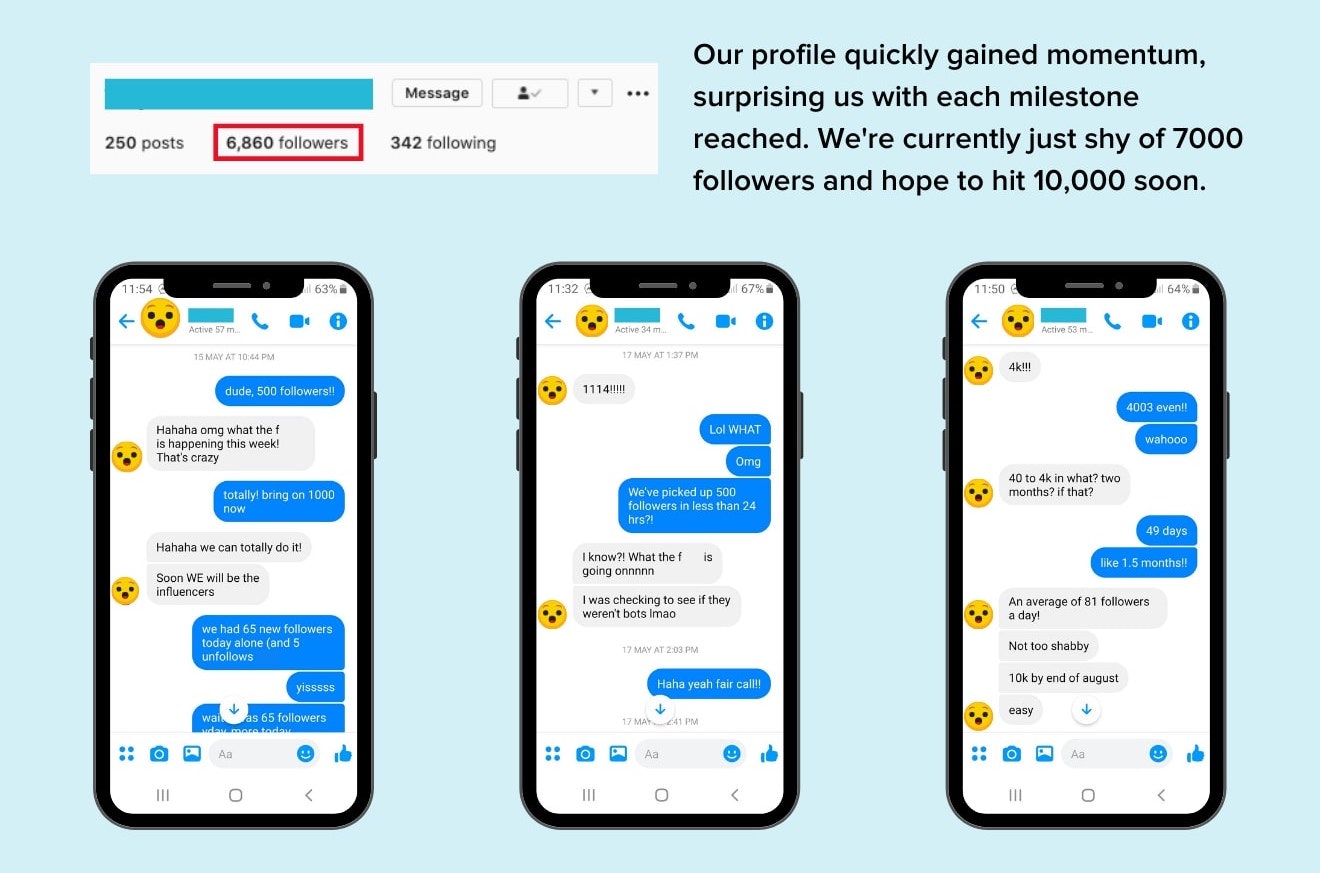
Sure, our following is nothing compared to mega influencers, but our Instagram account is so low maintenance that gaining this following in such a short space of time feels like an achievement worth celebrating.
And, what's more, we've even had sales through our Instagram profile. We never expected that to happen – and it all happened for free.
Building a social media presence is not something that every ecommerce entrepreneur wants to focus on, but I believe that it can help your business. If you're curious to learn how to bulk up your profile, read on to learn exactly how we did it.
Research Your Niche and Community
After thinking about our options, we decided to create a niche store focusing on products that would have broad appeal to a younger age group who enjoyed social media trends.
After importing products to our store that we knew this group would like, we also decided to add items to appeal specifically to a smaller niche within the group. We discovered this small niche through social media and, after some research, realized we would have few competitors. We used social media to get to know the niche and to get an understanding of what they would like.
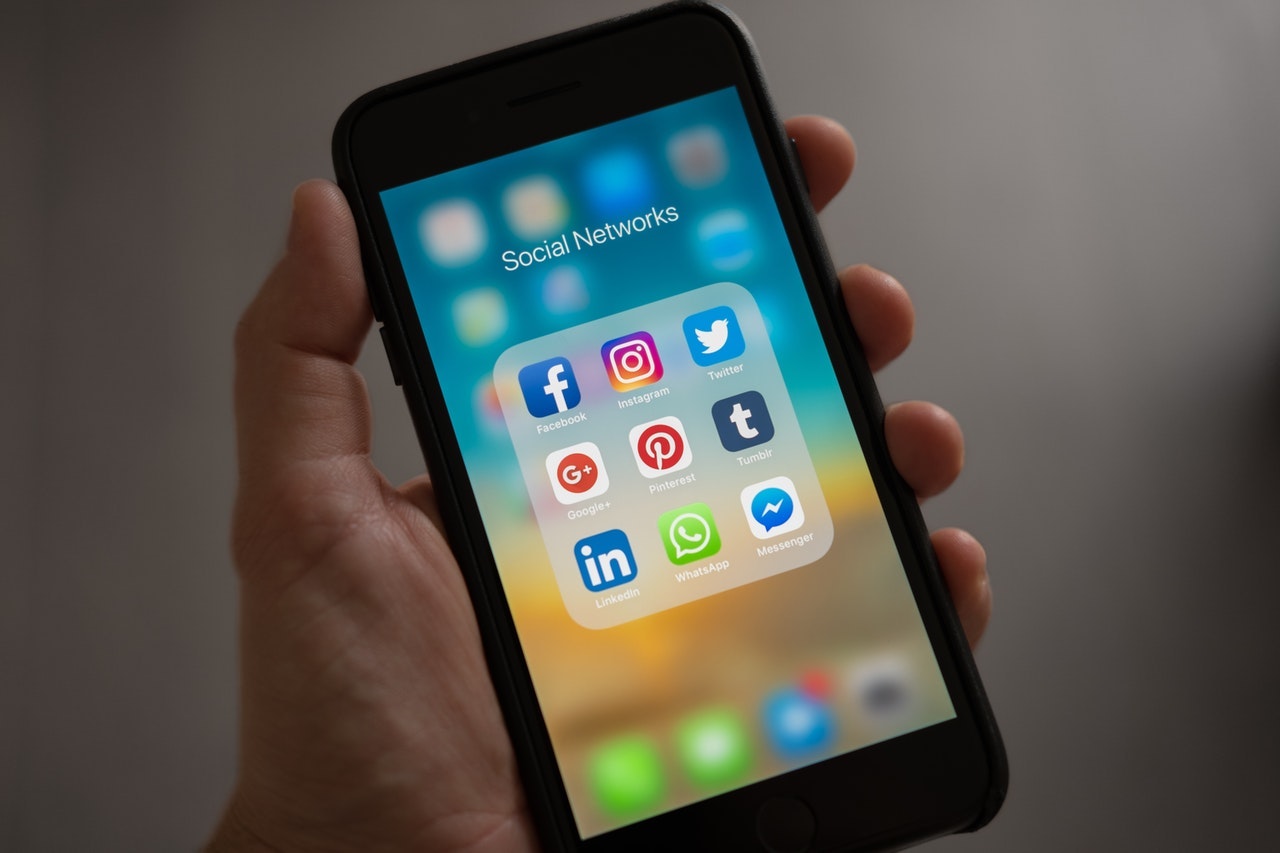
Although I won't reveal our specific niche, you could easily find your own by looking at discussion forums or social media. Think of communities with a particular interest or aesthetic but are currently underserved. You should also dig deep to find sub-cultures. For example, it's easy to find communities who love building computer setups, but why not get more specific and solely target the mechanical keyboard enthusiast community.
Because all our product pages were search engine optimized, we knew people would find our most popular products. But for our more niche products, we wanted to become embedded in the community and realized Instagram was the key.
After deciding to dedicate our Instagram to a specific niche, we wanted to make sure those in this community would discover our new account. And the best way to do that on Instagram? Hashtags.
We found that the best way to find relevant hashtags was to start with the most apparent tags and use them as a jumping point. These hashtags all had a high number of posts, which was great, but also meant that other users might dominate them.
To avoid our posts getting lost in the noise, we looked at influential accounts in our niche to see what hashtags they used. There are also websites to help with this process, but we found manually searching worked best for us.
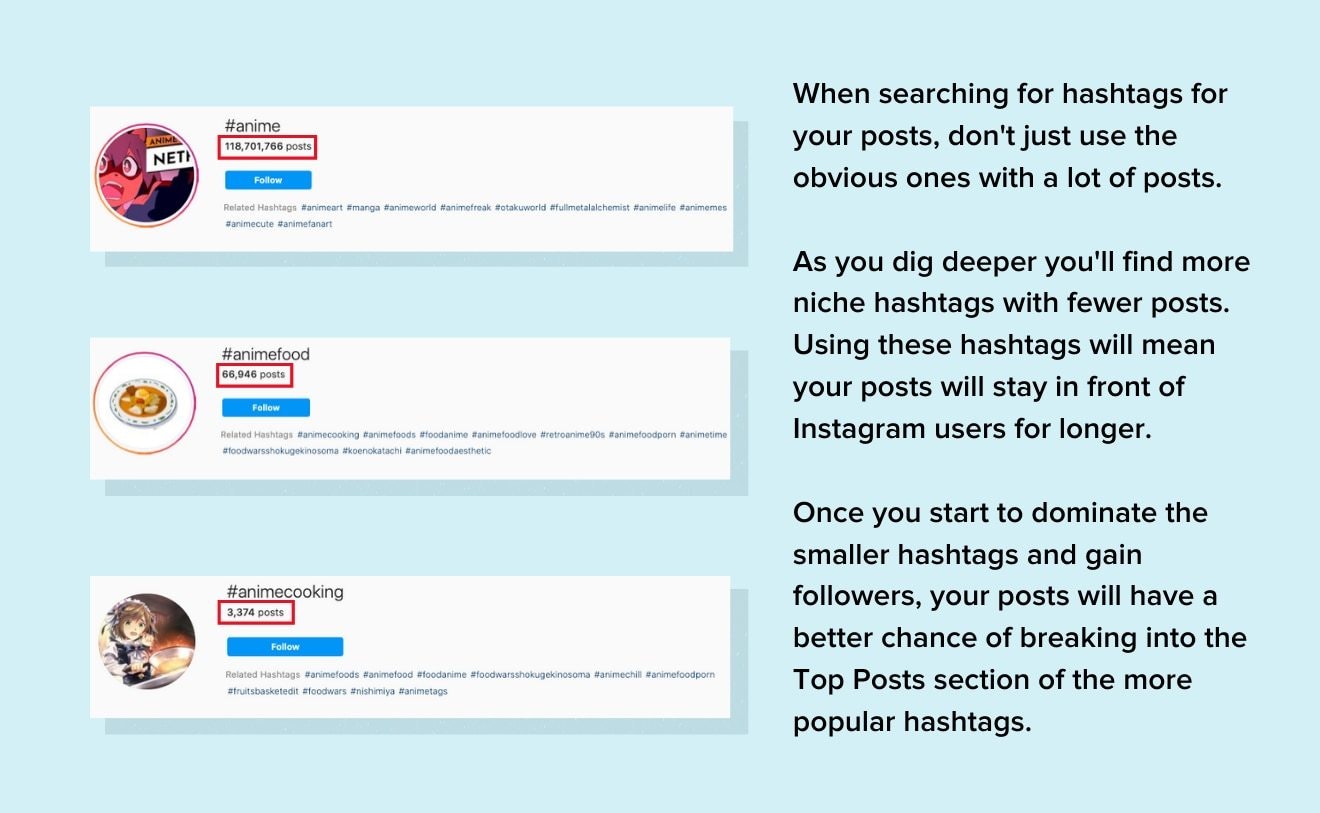
After spending time collecting the different hashtags, we ended up with a small list that included the most popular hashtags through to those that only had a couple of thousand posts. Our idea was to dominate those smaller hashtags, gain followers, and earn favor with the Instagram algorithm to be shown more prominently on the more popular hashtags. It was a tactic that soon paid off. Even if we were unable to grab a spot in the 'top posts' section of a popular hashtag, we had uplifts in traffic from totally dominating the smaller hashtags.
Post Multiple Times a Day
Even with a carefully cultivated list of hashtags, no Instagram account will gain a following unless you post a lot of content.
To jumpstart our account, we signed up to the scheduling tool Buffer. We took advantage of the 14-day premium trial, meaning we could schedule as many posts as we wanted in advance. This allowed us to schedule posts for entire weeks, getting all the work done at once. By the time the trial ended, we already had the beginnings of a good follower base.
Using Buffer's free account, we've set up five different time slots for posting and aim to post between three and five pieces of content per day. This regularity means we stay on users' radars. If someone doesn't follow us the first time they see one of our posts, they might when they see the fourth or fifth.
We tend to post simple pictures to our profile, and a lot of our content is gathered from Pinterest and credited where possible. However, depending on the community you want to target, places such as Reddit, Twitter, or TikTok can be treasure-troves – or simply make original content.
Post What Your Followers Want – Not Just Ads
If you've ever used Instagram, you'll know how annoying it is when a profile posts nothing but sponsored content or advertising. Nobody follows someone on Instagram for constant ads, and you should avoid doing this with your store's account.
We wanted to make our profile a place that reliably provided the type of content our niche wanted to see. In doing this, we hoped that when we did post our products, our audience wouldn't mind because we'd built up a good relationship. However, this can be difficult if you don't know a niche particularly well.
If you aren't sure what your audience actually likes, be sure to do some serious research. You could also consider hiring someone who already has a better understanding, which is what dropshipper Burak Dogan did. After entrusting his Instagram account to his sister, she grew his store's account to almost 37,000 followers.
Once you have a good grasp on the type of things your community likes, be sure to post a lot of that content with just a sprinkling of ads mixed in between. We leave between three and ten posts between any posts advertising our products to avoid overwhelming or annoying our followers.
Because our store has multiple products, we can cycle through different items in our product posts without repeating, avoiding annoying our followers. However, if you're a one product store, you might need to get a little more creative with the assets you use, to keep your product posts looking fresh.
Engage with Your Community and Followers
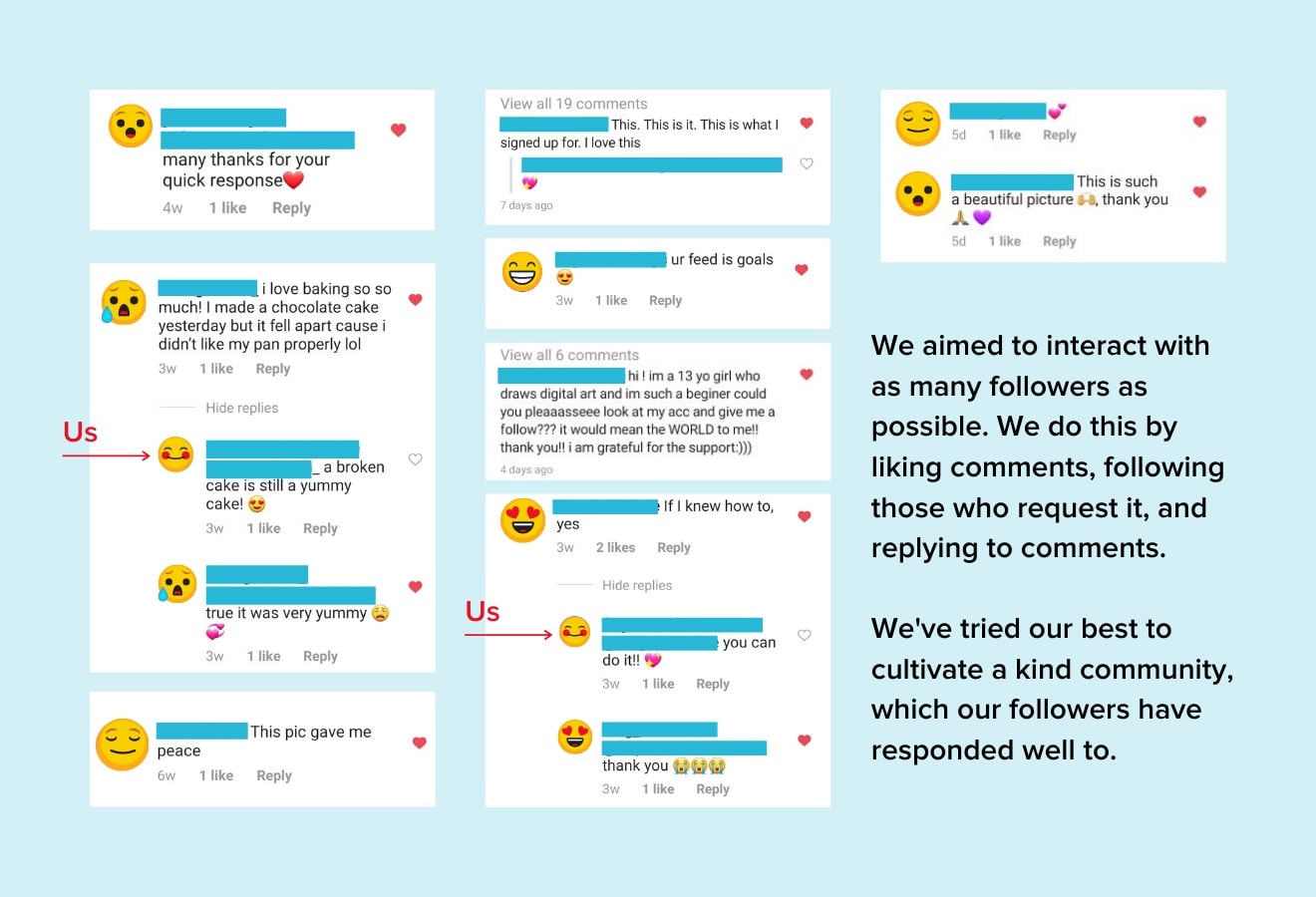
Engaging with followers is one of those things that seems like extra work, but we've found it an excellent way to connect with our followers, a.k.a potential customers. After all, it's not exactly fair to want to take from a community without giving back.
While it's hard to prove whether this has helped our following grow, we believe our interactions have helped retain followers and better establish our profile and brand.
Our community loves to comment on our posts, especially if we've included a call to action or question in our caption. We try to like all comments and reply when appropriate – occasionally, our quick replies even catch followers pleasantly off guard. We've been open to posting content from followers and often follow those in our niche. Our tone of voice is polite, and kind, and it's resulted in a very pleasant community of followers.
Engaging authentically with the followers is a tactic that store owner Courtney White swears by. Her genuine and friendly approach has resulted in the growth of a fantastic community for her store, Finer and Dandy. She has even taken this to the next level and works with Instagram users as affiliates for her store, shunning Facebook ads altogether.
Fine Tune With Analytics
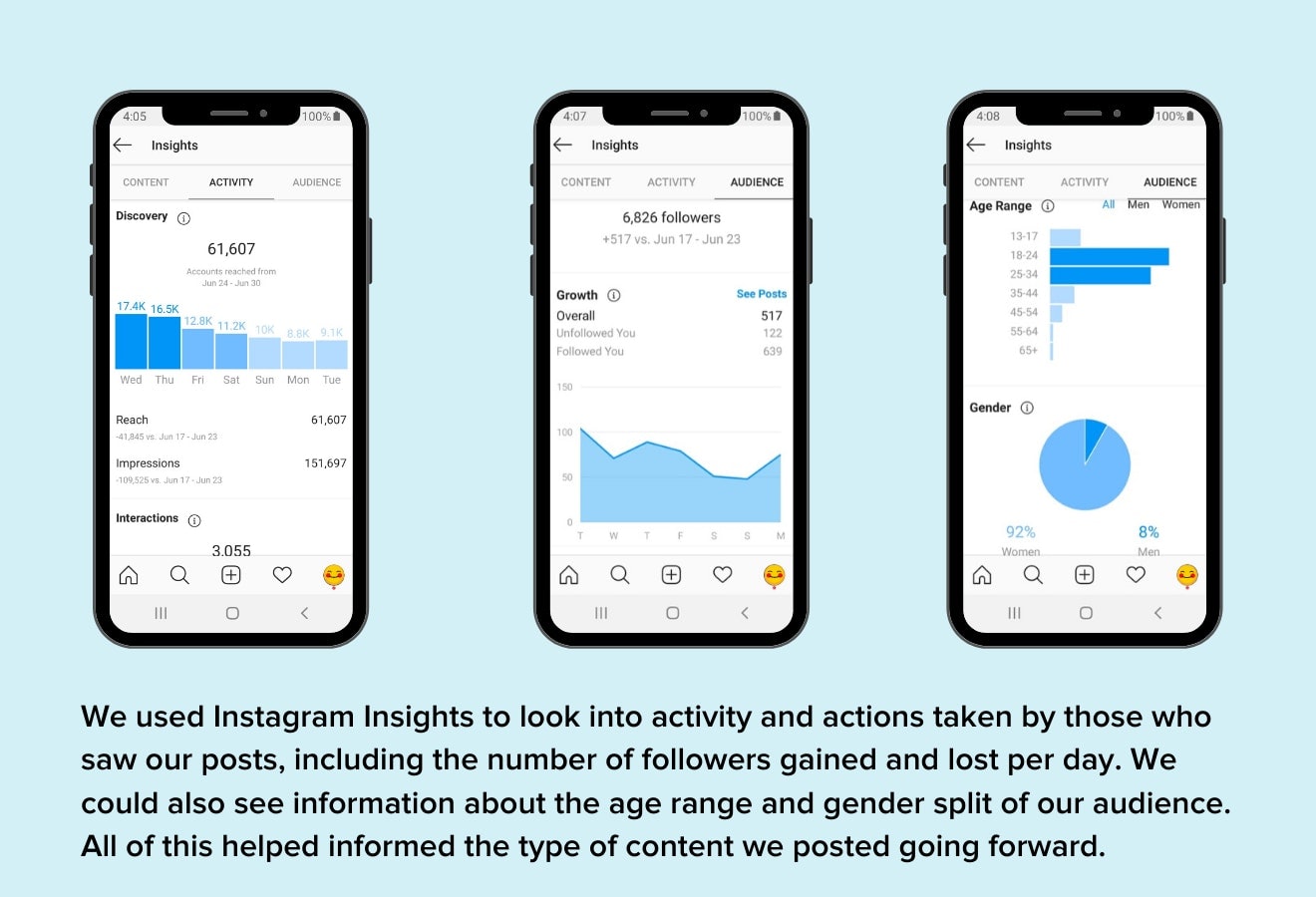
When we started posting to our account, we did what seemed like the right move. However, after a few weeks, our Instagram Insights began filling up with data. This meant we could dig into how our followers were receiving our posts.
Using the information in Instagram Insights – available to any business profile – we could see precisely the engagement, reach, comments, followers, impressions, likes, and website clicks each post was getting. We saw which product posts resulted in website visits and that specific themes in posts outperformed others. For example, pictures of home interiors consistently perform better than posts with animals. This was the opposite of what I had thought (who doesn't like animals? Our audience, apparently).
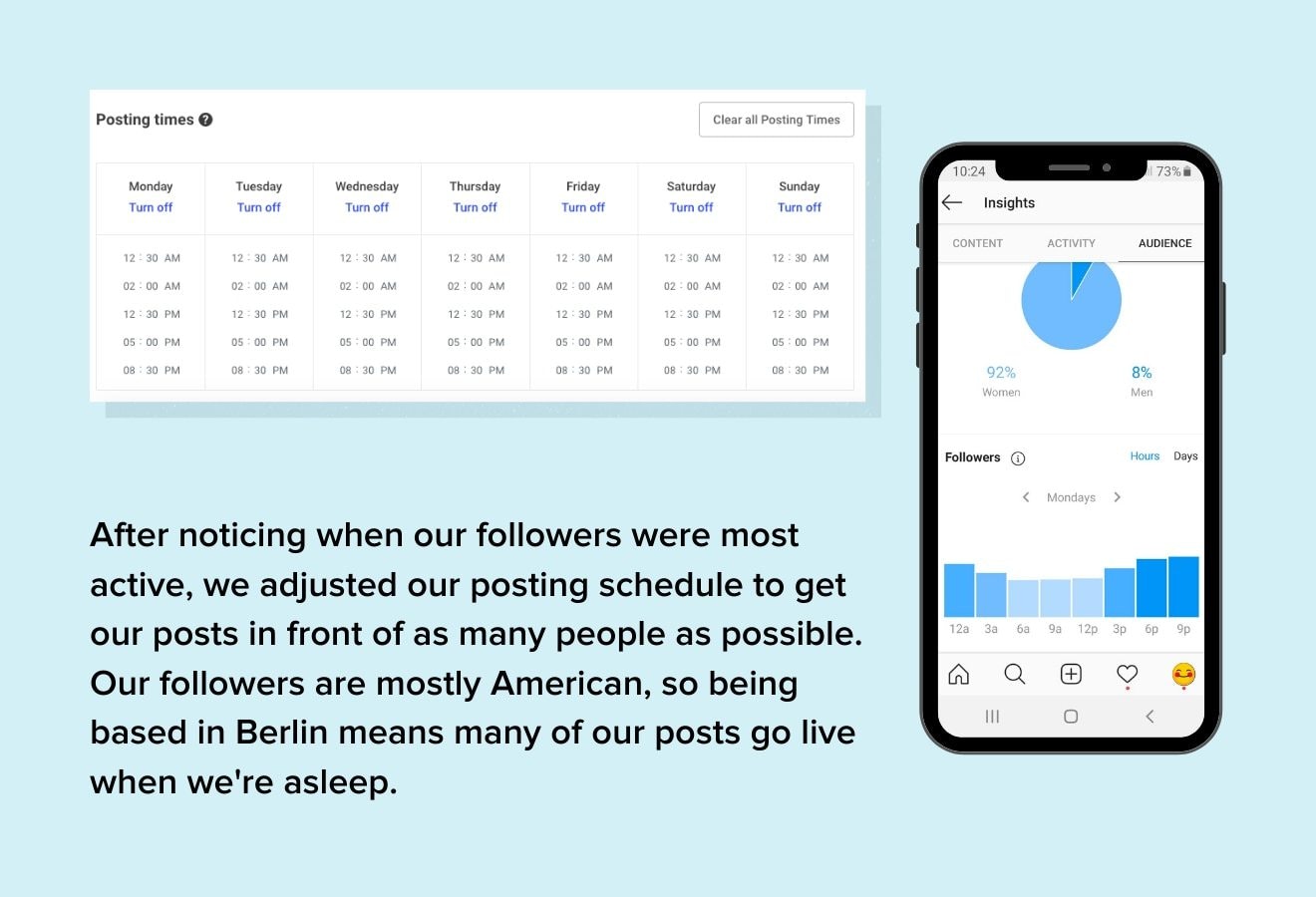
We also used Insights to fine-tune our posting schedule. Right at the bottom of the Audience tab in Insights, there's a section called Followers. This shows the average times your followers are on Instagram – both the hours and the days. Here we discovered Monday was when most of our followers were online, and Tuesday was the lowest day.
We were also able to see our followers were most online between 8 a.m. and 8 p.m. US Central Time. Because most of our followers are from the United States, this made total sense. Using this information we adjusted our scheduled posting times to match when most users were online.
Things We Should Have Done Sooner
As with anything, there was always going to be things we wished we did sooner with our account. Here a few things that we eventually started doing that would have been better to implement from day one.
Make Our Posts Shoppable
For the first seven weeks of running our account when posting products to our feed, we told our followers to click the link in our bio. Although this worked, we eventually realized we should have also been tagging our posts with the products. Because our store was linked to our Instagram account, tagging the products was super simple, and it was a shame we didn't do it sooner. Now any time we post a product, we tag the item in the post as well.
Set up Posting Schedules
I've mentioned our posting schedule a few times in this article, but it took us awhile to put this in place. In the beginning, we were manually setting the publishing time – even if we were posting at the same time every day – which took longer than was necessary. It's an excellent reminder to take advantage of all the features in any scheduling platform you use.
Creating a Link Directly to Our Collection
Our store currently gains visitors through traffic from social media and search. However, the Instagram audience generally buys different products to the search audience. As a result, our store's homepage is a mix of products that mostly caters to the search audience.
After a few weeks posting products on Instagram and directing followers to click the link in our bio, we realized that anyone following that link would go to a homepage filled with items different to those on our Instagram account. We wanted anyone following the link to quickly find the product they had seen on Instagram, so we swapped it for a link to a specific collection instead. The collection contains all the products we post about on Instagram and fits the theme of our Instagram profile. This makes it a better experience all round for potential buyers.
Plans for the Future

Overall our experience running a niche Instagram account has been fun. Although I've covered a lot of content in this article, our account is very straightforward to run. Because we know the type of content our community enjoys, we can easily schedule posts. Then it's just a matter of checking in and interacting with followers.
Our Instagram account has already made us a tiny amount of money from orders. The traffic that comes to our store from Instagram provides excellent data for our Facebook Pixel. This will all be extremely useful if we decide to run Facebook ads in the future.
In the coming weeks, we hope to grow the account to over 10,000 followers and make use of Instagram Stories. Once a business account has 10,000 followers, it can use the "Swipe Up" function in Stories, adding another exciting aspect to our Instagram experiment.
If you plan to use any of the tips from this article or have your own – let me know in the comment section below, I'd love to hear them.
Want to Learn More?
- How to Use Instagram Stories Like a Pro to Build Your Audience
- How to Optimize Your Instagram Profile to Skyrocket Growth
- 10 Instagram Stats Every Marketer Should Know in 2020
- Instagram Helped This Serial Entrepreneur Launch a Life-Changing Business
How to Get Followers in Domain_6 Without Following
Source: https://www.oberlo.com/blog/organic-instagram-growth-case-study
0 Response to "How to Get Followers in Domain_6 Without Following"
Post a Comment